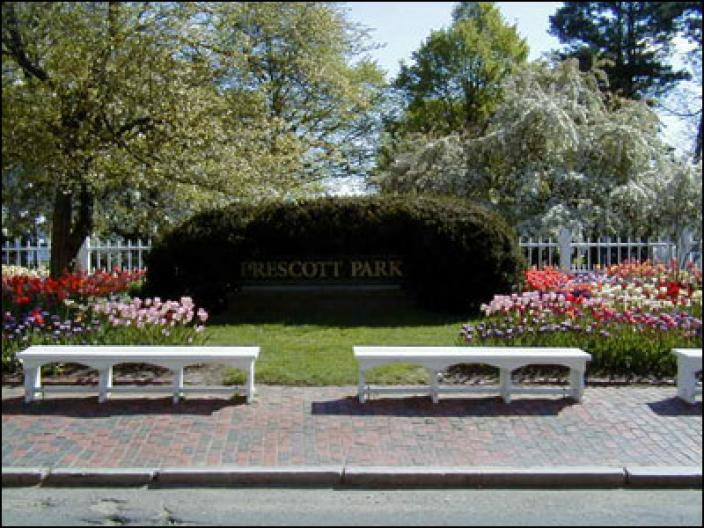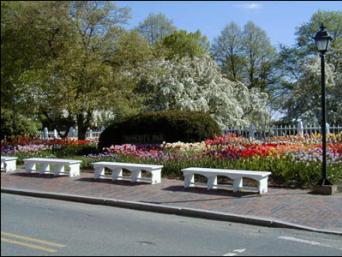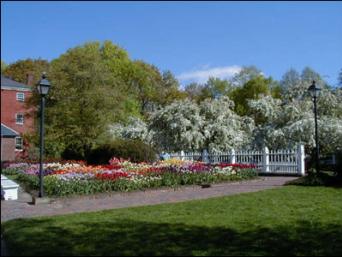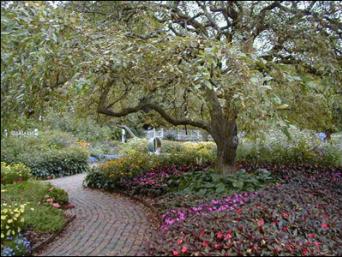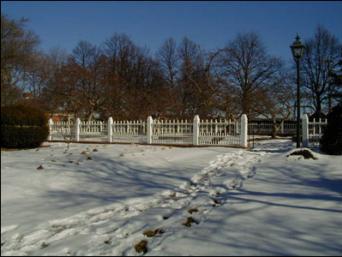History
Prescott Park was created and is maintained according to the terms of the last will and testament of Josie F. Prescott, a life long resident of the City of Portsmouth. It was her wish that a public park, free and accessible to all, be established along the Portsmouth waterfront replacing what had become an unattractive former industrial area of Portsmouth.
The gardens at Prescott Park were created when the Prescott Sisters purchased the waterfront acreage in the 1930s and willed it to the City in 1954 for public enjoyment. In 1975, at the suggestion of then-Park Supervisor Michael Warhurst, the Trustees of the park invited UNH to move its All-American Selections Program trial gardens from Madbury to Prescott Park, and created 40 formal garden beds on the South Lawn of Prescott Park. Those trial gardens, planted with “a living catalog of flowers,” were designed to study which varieties of ornamental plants performed best in the seacoast environment. When the formal association with the All-American Selections Program ended, the City continued to purchase All-American Selections seeds and had the plants grown-out in the greenhouses of UNH. Then responsibility for designing the gardens, selecting plants and planting and maintaining the gardens passed to the Parks & Greenery Division of DPW, with help from seasonal staff.
The gardens of Prescott Park serve the purpose of being both beautiful and educational. City gardeners identify the plants and flowers so visitors who might want to choose something similar for their own gardens know what they are.
Gardens
The 10-acre Prescott Park contains a variety of individual garden spaces, from the formal plantings around the sculptural elements of the massive waterfront anchor and Cabot Lyford’s “Whale,” to the bed of hostas along the shaded Mechanic Street edge of the garden. In between are the Liberty Gardens, beds of annuals designed and installed by City staff, including summer associates. Designed with an eye for height, color and massing, the gardens attract butterflies and other pollinators – and provide inspiration for photographers, landscapers and home gardeners. Garden tours are offered seasonally.
